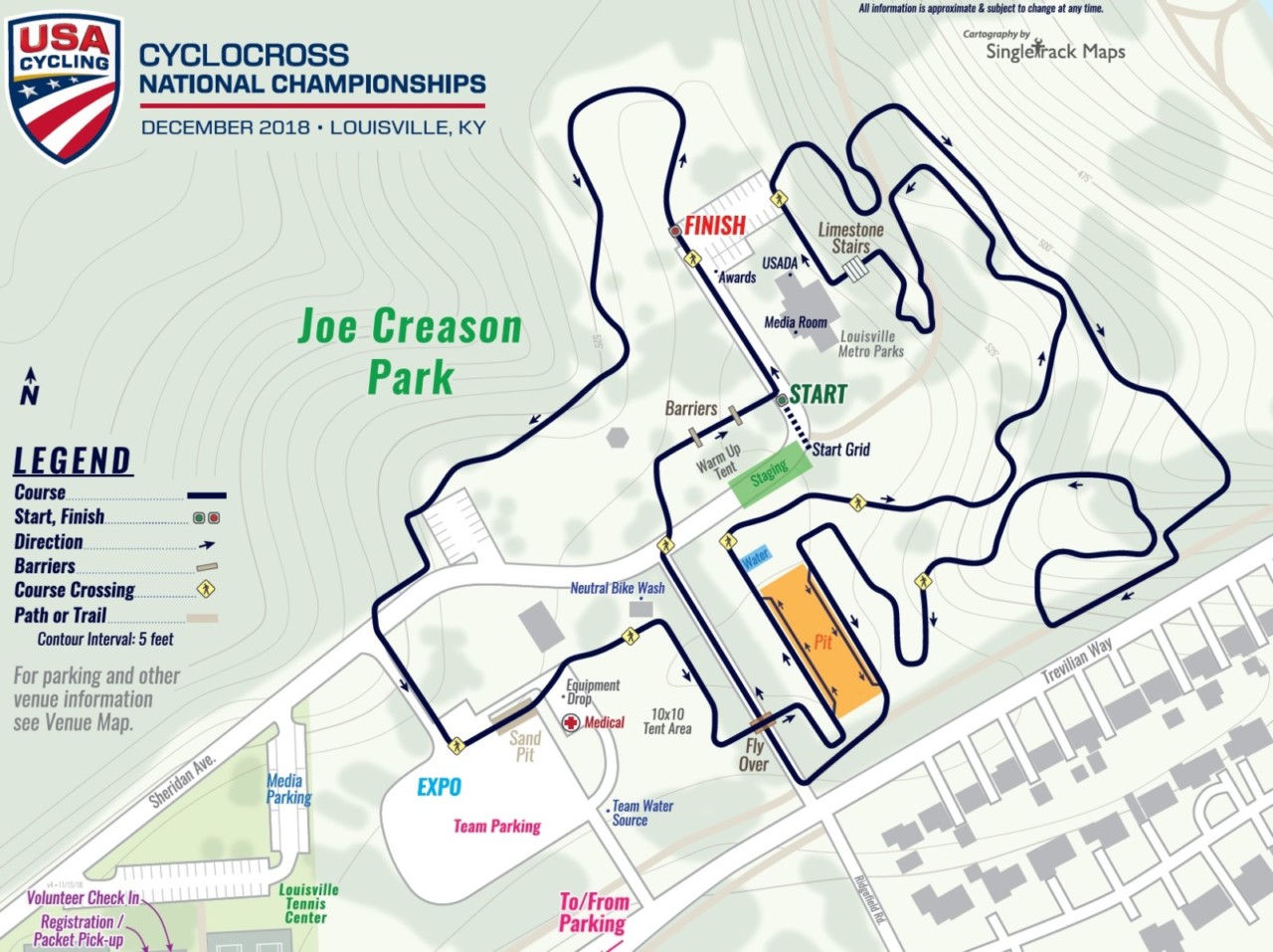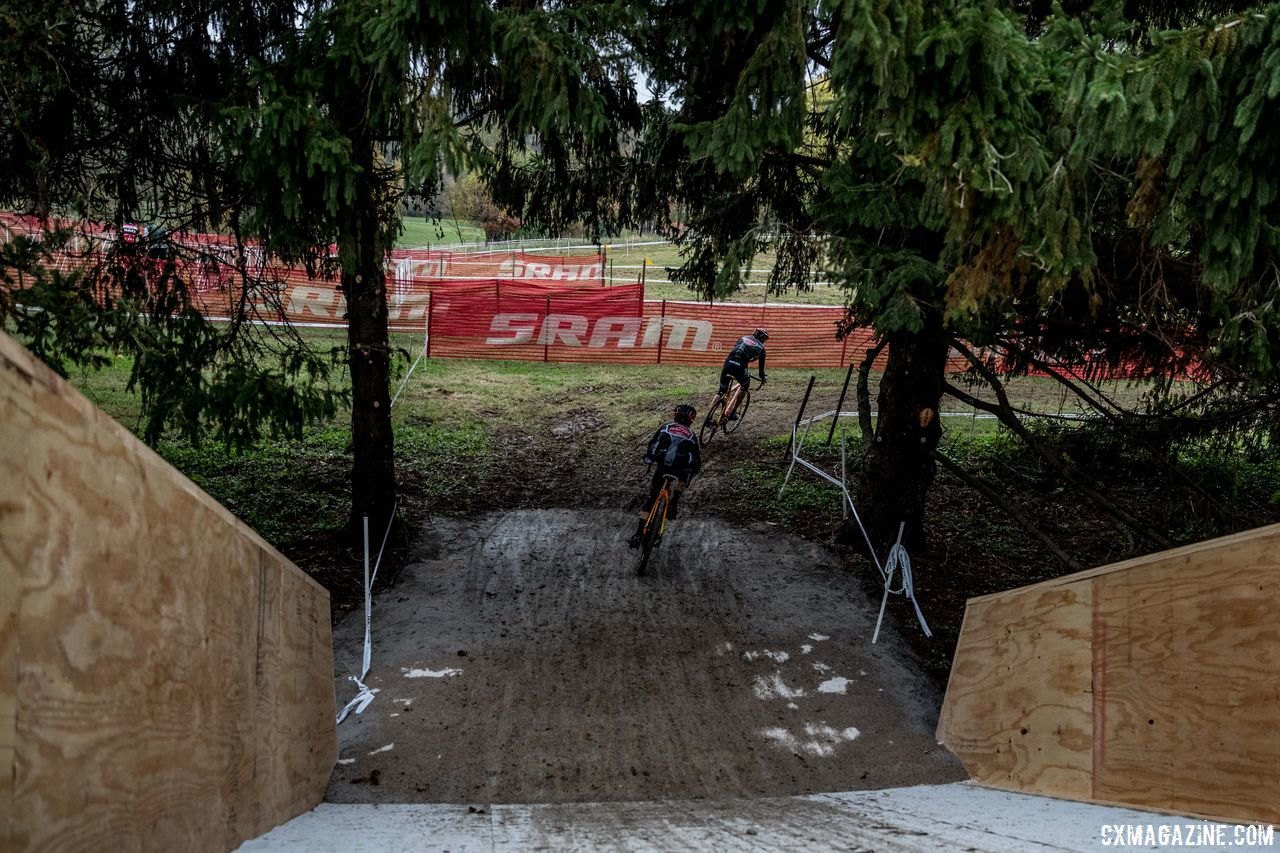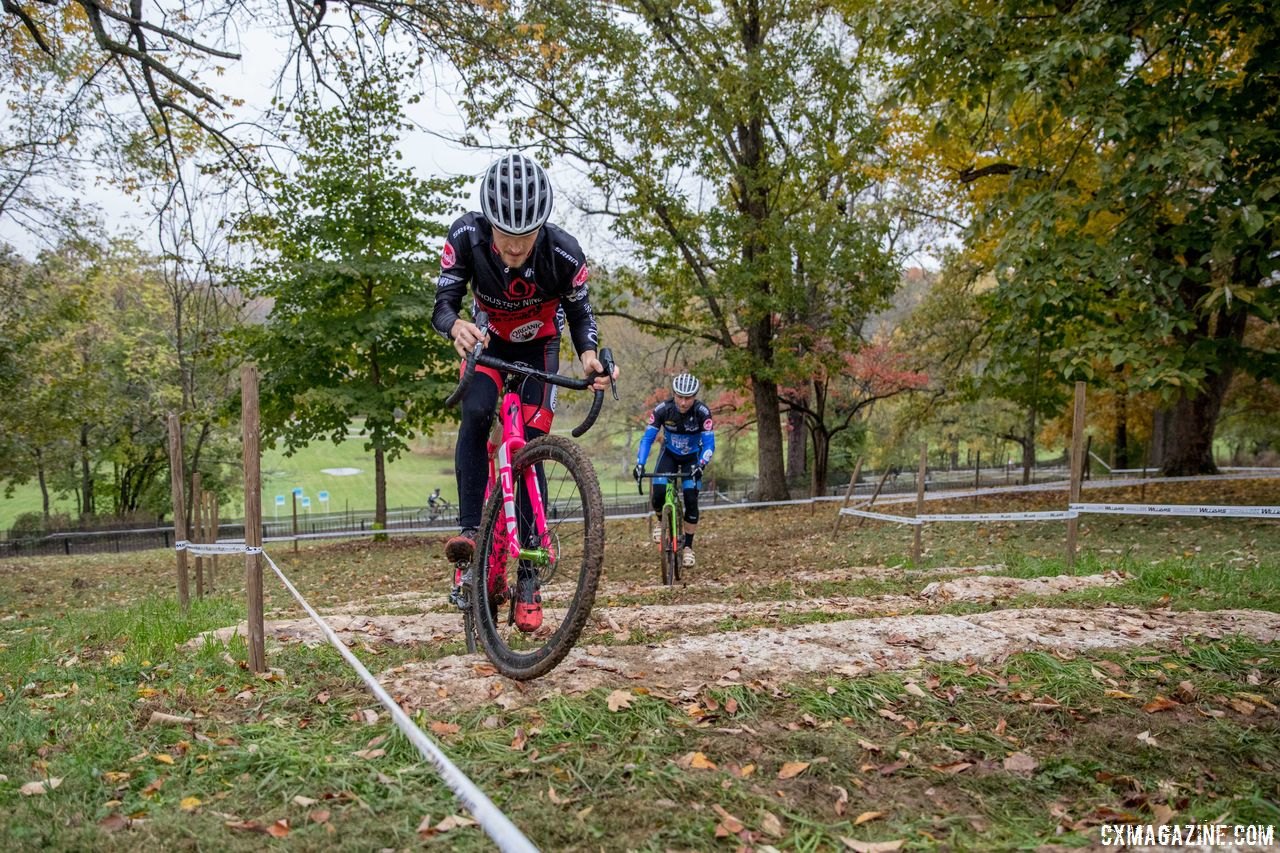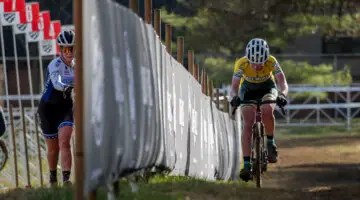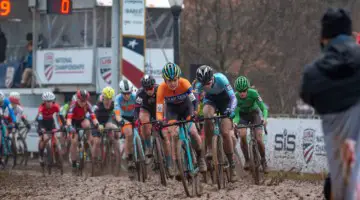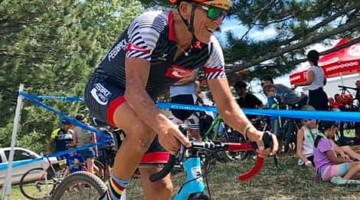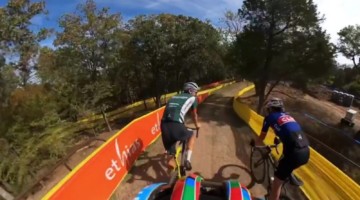Next week’s Cyclocross Nationals are being held in a town many of us have been to before, but at a venue not many people have raced at before, the unknown looms!
I raced at the Derby City Cup last year. The Nationals course will be different, but in those changes, they addressed every issue I had with the course last year.
I’d like to lay out for you my best guess at what the course will feel like and what to look out for. If you’re not interested in that, skip to the end where I have some coaching tips for you as well.
This article owes a huge debt to CXHairs and Bill’s invaluable annotated map here. The course map from USA Cycling is below.
Louisville Nats Course Breakdown
The start is greatly improved from last year. It’s a reasonably flat paved road in the heart of the venue. It alleviates the problems getting to pro parking from last year, and it also gets rid of the treacherous left-hand pavement-to-dirt transition Louisville seems so fond of.
Nationals will take us out to a fairly flat field and continue there. It should be a nice wide-open start to the race for the most part until the sand pit, also a new addition this year.
The course then picks up the old route, more or less, through a flat field into the flyover. That new flyover smelled so good last year!
It’s a traditional stairs–to-flat–to-ramp affair. The righthand turn off the flyover was muddy last year and was somewhat intimidating. The main thing was to check your speed on the flat portion so you hit the right-hander at an appropriate speed.
The course goes over the flyover into a really nice pit approach, then past the pit washers. There was a lot of run-off from the washers last year, but my impression is that issue will be addressed this year.
There was also a pretty sketchy turn on pavement last year made worse by the accumulated runoff from the pit. It doesn’t appear that we do that this year. Another plus.
From there it’s downhill through a field into the most technical portions of the course. The hard left turn is uphill. If you had a clean run at it you could make it, probably. I saw a lot of people run it or dab.
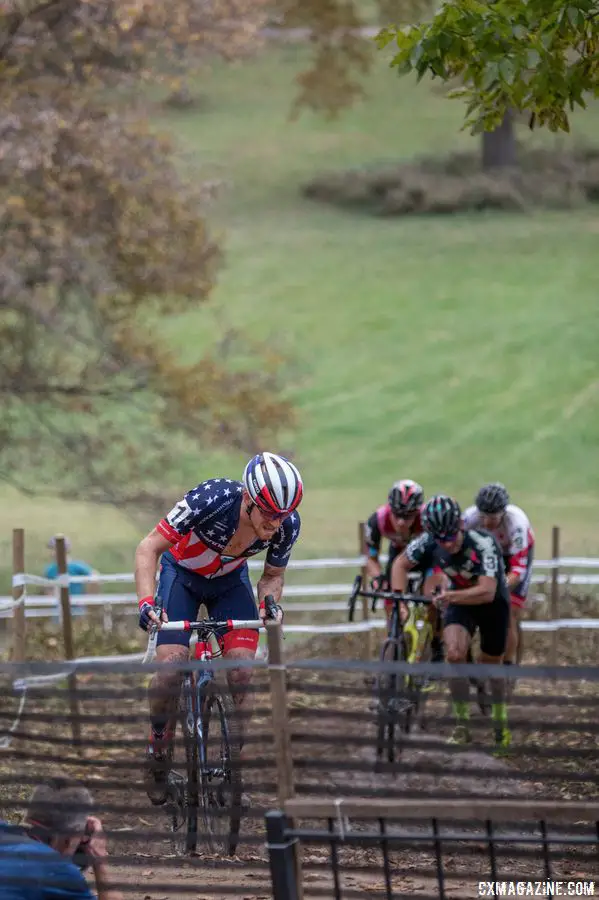
The muddy left-hand turn was challenging in 2017. 2017 Pan-American Championships. © D. Perker / Cyclocross Magazine
That leads to a paved road for about 20 meters, into a fairly narrow very off-camber section. You can see footage here. If the person in front of you doesn’t clean this, odds are you won’t either, so be ready to dismount quickly if needed.
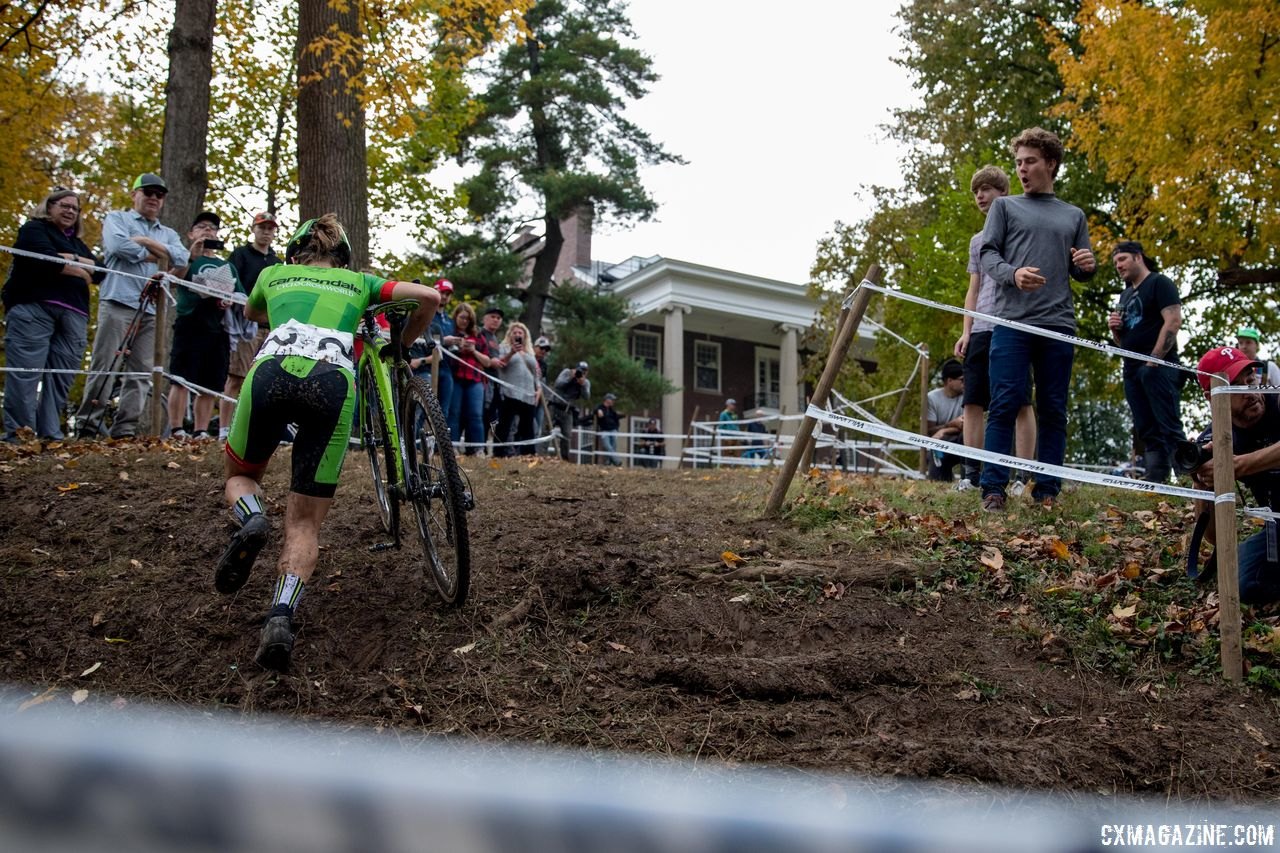
The corner after the off-camber became increasingly difficult to ride as the day wore on. 2017 Derby City Cup. © D. Perker / Cyclocross Magazine
In any case, there’s a sharp hair pin right that will most likely be a run. Then another 10 meters to the stone stair steps. The main point is there are a couple hundred meters where you could be on and off the bike a lot, maybe running all of it in the back of a big field or if it gets particularly muddy. This should be the tightest point on the course.
Then it’s off to the plunge. Apparently we’ll come in with a bit less speed this year, which is a good thing.
That said, traction was pretty good there last year. And it produced one of my absolute favorite photos of all time (Mark Legg call me I still want a poster!). The plunge starts just after the road crossing.
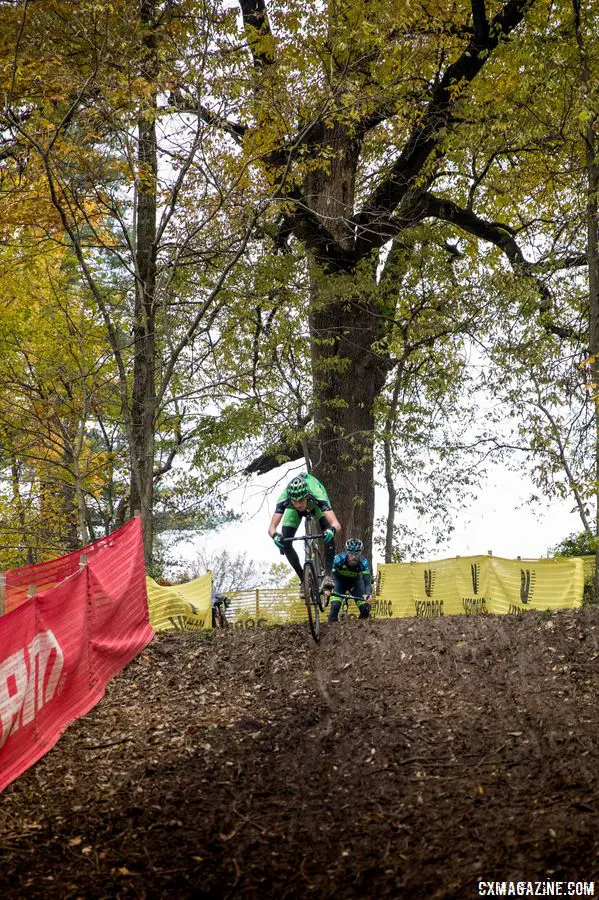
Maybe the plunge will be a little less plungey this year? 2017 Derby City Cup. © D. Perker / Cyclocross Magazine
Out of the turn at the bottom of the plunge, it’s a long steady flattish section. Like most of the course, if it’s dry this could be fun. Last year it was reasonably muddy and was a long slog.
Then there’s a short climb up to the road. Like the climb before the off-camber, some people made it and some didn’t. The amount of mud will determine the ride/run decision there. Then we’ll hop on a paved path for a minute that’s still uphill. Then the course heads down into the bowl. Last year it was basically one long climb into a very short descent into a very long climb. It appears both of those have been shortened this year.
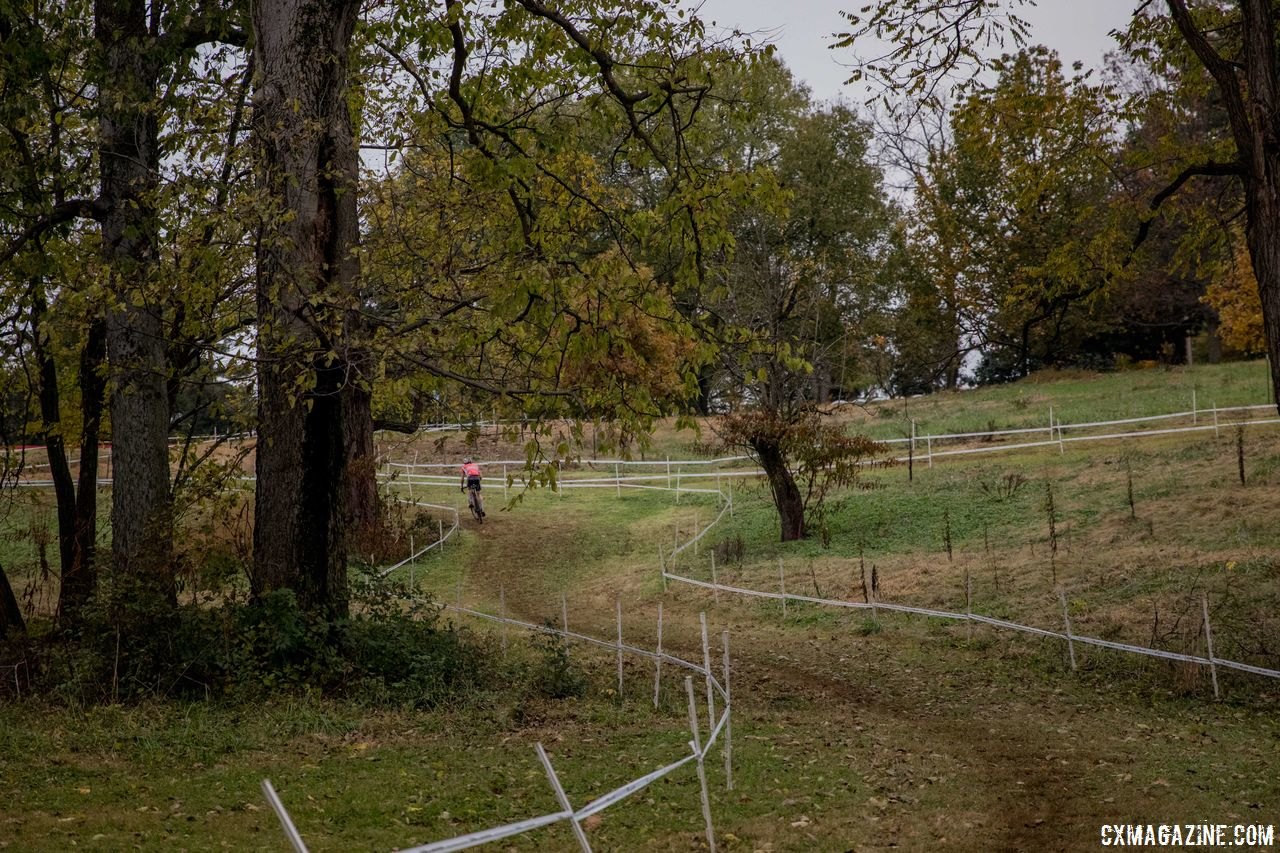
The middle part of the course is more or less a bowl. 2017 Derby City Cup, © D. Perker / Cyclocross Magazine
We’ll come off the pavement (first short climb), descend into the bowl and then head up to the pit. The climb to the pit looks much shorter this year. That said, it goes more or less right up the hillside this year. I’d plan on a 30-second climb, 15-second descent and then into a 1 min climb back up to the pit.
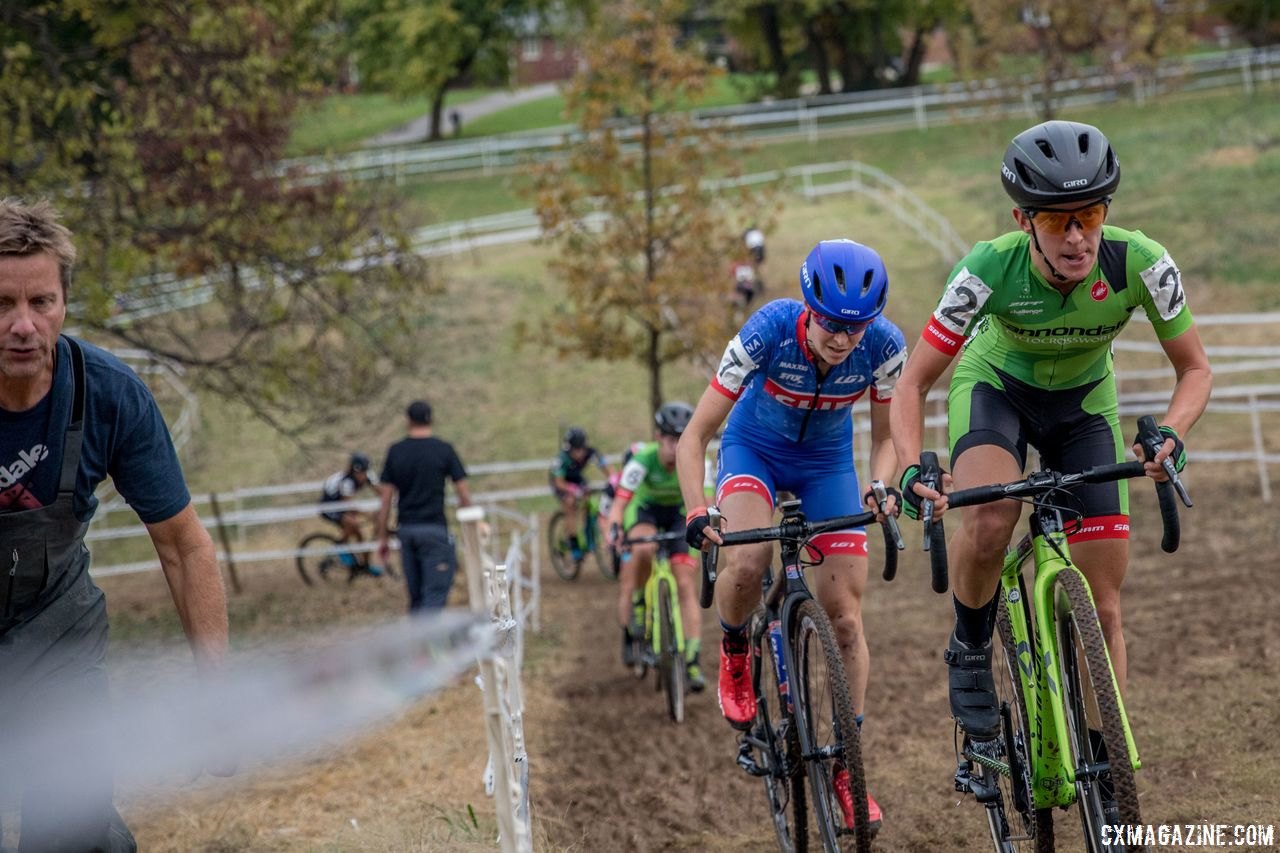
There is one last climb out of the bowl before reaching Pit 2. 2017 Derby City Cup. © D. Perker / Cyclocross Magazine
From there it’s a nice paved road (under the flyover) to the barriers and then the finish. That eliminates the incredibly technical rock garden that was before the finish last year.
Preparing for the Kentucky Weather
As always, the weather will be a huge factor. Allow me a dad digression here.
The magic in bourbon comes from putting corn liquor in an oak barrel and then cycling the liquid in and out of the wood of that barrel via temperature variations. Cold pulls the white dog (bourbon straight from the still) out of the wood, heat pushes it in.
MY POINT IS, the weather in Kentucky is highly variable, which is what makes the bourbon so good. I think we’ll see at least one ~50F day, a few days around freezing and lot in between. The current forecast is for a dip in temperatures early in the week, so think low 30s, maybe slightly colder.
Furthermore, the soil in Kentucky is clay, so it doesn’t drain well and tends to be sticky.
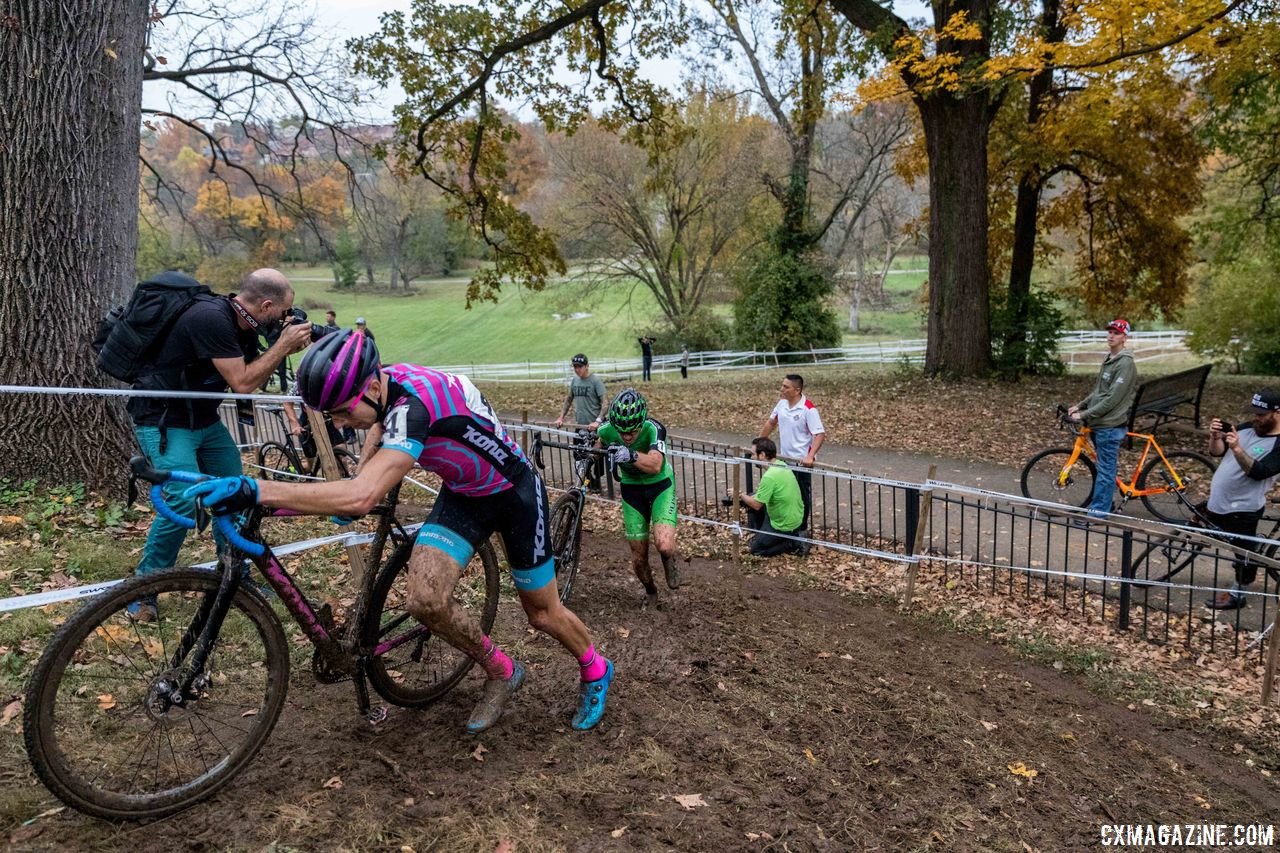
Last year’s Derby City Cup was plenty muddy and sticky. 2017 Derby City Cup. © D. Perker / Cyclocross Magazine
I’d assume it’s going to be some level of muddy and prepare accordingly with tire and toe spike selection. It could be warm, it could not be. I’d bring all the clothing you own.
It’s been particularly wet east of the Mississippi this year too, so don’t be surprised if we get more rain. The course rides very well in the mud but involves a lot of low cadence threshold pedaling. And of course, it’s going to increase your running in a few key spots.
TL;DR, compared to last year I think we’ll see a course with a bit less climbing, a bit more safety and some added technical elements.
A Bit of Pre-Nats Coaching Advice
All that said, the course will change during the week. the course designer will move stakes around as needed to address issues as they arise during the week. In Hartford, the course was changing every two to three races every day.
Cyclocross is a sport that rewards preparation. Jeremy Powers said he rode one corner in Austin roughly 40 times.
I have definitely had (and seen) freakouts when a section of course was added that we were not allowed to ride beforehand. Let it all go, and don’t burn any energy over it. The course changing is not something you can control. Why get angry that a few stakes have been moved? No one has an advantage in that situation.
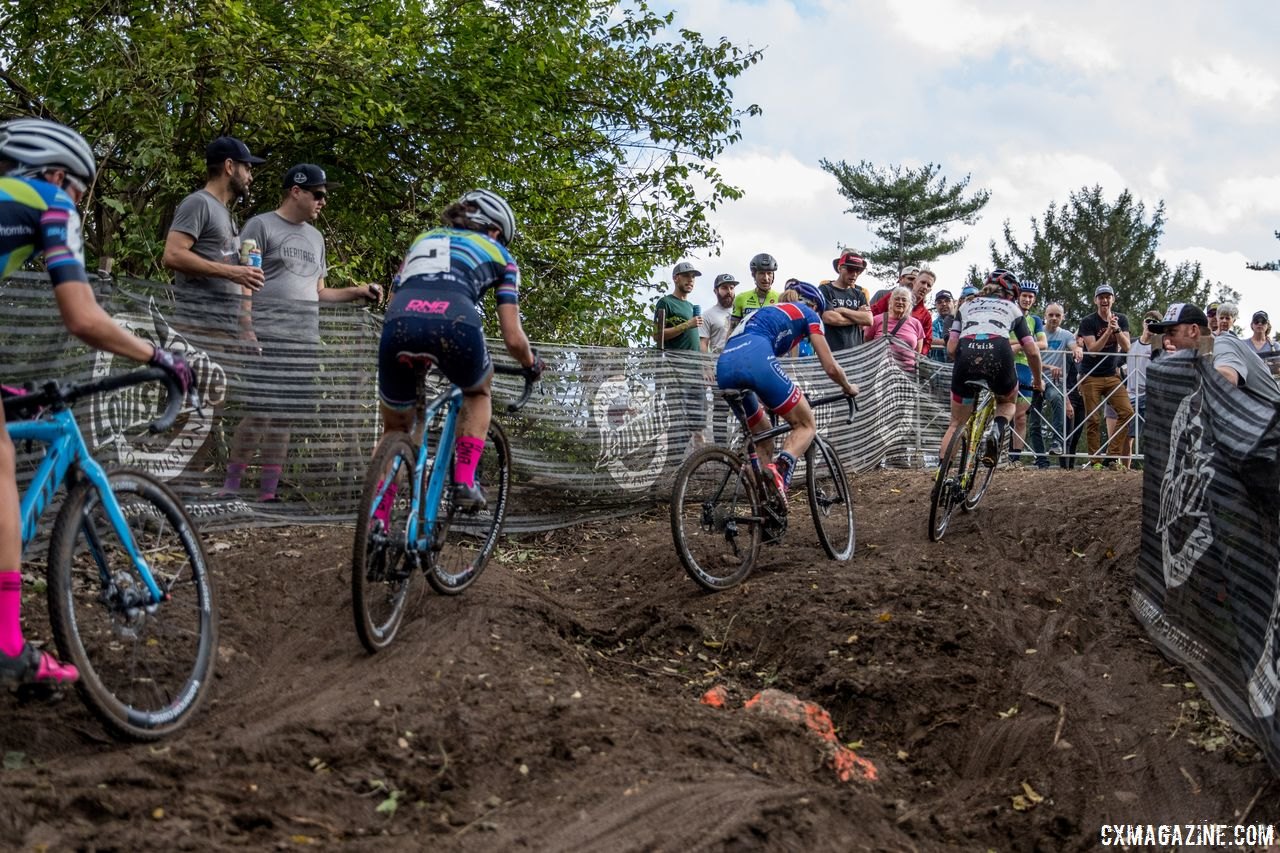
Corners and sections change every lap. Be patient and roll with the punches. 2017 Pan-American Championships. © D. Perker / Cyclocross Magazine
Hit it the first lap and be prepared to do the best you can. The next lap maybe you can formulate a better plan. Look ahead of you and see what’s working for the people in front of you. You having every centimeter of the course dialed in isn’t what ensures your best race.
What does ensure your best race is bringing your best effort to every section of the course, and dealing with setbacks in a calm, positive manner.
Whatever happens, I hope you have your best race at Nationals. Make sure to have fun and enjoy your last race of the season!













